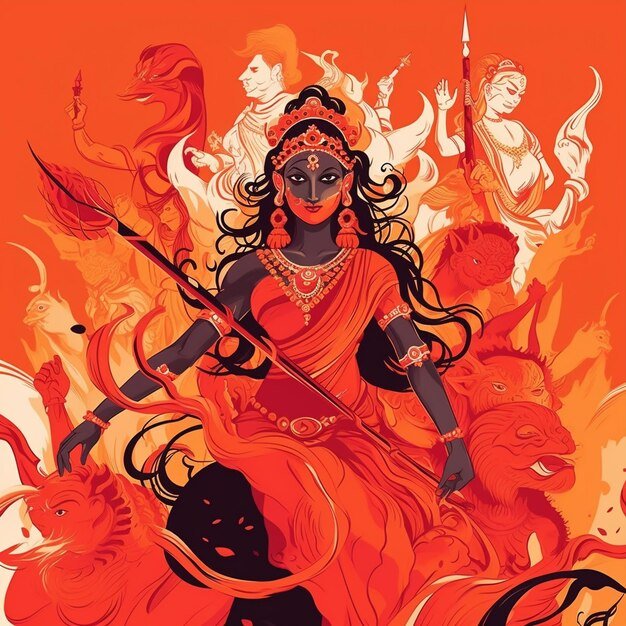Dussehra, also known as Vijayadashami, is one of India’s most powerful and symbolic festivals—celebrated with grandeur, devotion, and deep cultural roots. But beyond the fireworks, towering effigies, and processions lies a profound message that continues to inspire millions: the ultimate triumph of good over evil.
But what exactly is the origin of Dussehra, and why does it hold such enduring importance across India?

The Epic Origins: Ramayana and the Defeat of Ravana
The most widely recognized story associated with Dussehra comes from the Ramayana. According to this ancient epic, Lord Rama, the seventh incarnation of Vishnu, defeated the ten-headed demon king Ravana, who had abducted his wife, Sita. The war culminated on the tenth day—Vijayadashami—when Rama shot an arrow into Ravana’s heart, marking a victory of dharma (righteousness) over adharma (evil).
To commemorate this event, effigies of Ravana, his brother Kumbhakarna, and son Meghanada are burned across the country—a symbolic gesture that evil, no matter how powerful, is always destined to fall.

The Durga Connection: The Divine Feminine Triumph
In eastern India, especially in West Bengal, Assam, Odisha, and Bihar, Dussehra coincides with the end of Durga Puja—a celebration of Goddess Durga’s victory over the buffalo demon Mahishasura. For nine nights (Navratri), she is worshipped in her fierce forms, and on the tenth day—Vijayadashami—her idol is immersed in rivers, symbolizing her return to the heavens after defeating evil.
This version of Dussehra emphasizes the power of the feminine, divine strength, and the protective force of the Mother Goddess.

Cultural Diversity: One Festival, Many Forms
Dussehra is not a one-size-fits-all festival. Across India, it is observed in different ways:
- In Mysuru (Karnataka), the royal Dussehra involves grand parades, cultural programs, and a majestic procession with the idol of Chamundeshwari on a golden throne.
- In Kullu (Himachal Pradesh), deities from different valleys are brought together in celebration, showcasing unity in diversity.
- In Maharashtra and Gujarat, people exchange apta leaves as tokens of gold, symbolizing prosperity and goodwill.
- In Tamil Nadu, Golu—an arrangement of dolls—showcases stories from mythology, adding a creative dimension to the celebration.

More Than Myth: The Symbolic Relevance Today
Dussehra is not just about defeating mythological demons—it is a reminder that every person faces their own Ravanas: anger, ego, jealousy, lies, and greed. The festival urges people to confront and conquer their inner demons, to rise above negativity, and to choose virtue over vice.
It teaches that righteousness, truth, and courage may face challenges but will always prevail in the end.
Conclusion: A Celebration of Hope, Morality, and Renewal
In today’s complex world, where right and wrong often seem blurred, Dussehra serves as a guiding light. It invites people to reflect on their actions, strengthen their values, and strive to be better versions of themselves.
As the effigies burn and fireworks light up the night sky, Dussehra reminds us that even the darkest forces can be overcome—with truth, faith, and the will to do what’s right.
Also read: Feeding the Messengers of Ancestors: Why Crows Hold a Sacred Role in Pitru Paksha Rituals
Last Updated on Thursday, July 10, 2025 6:07 am by Goulikar Abhishek

